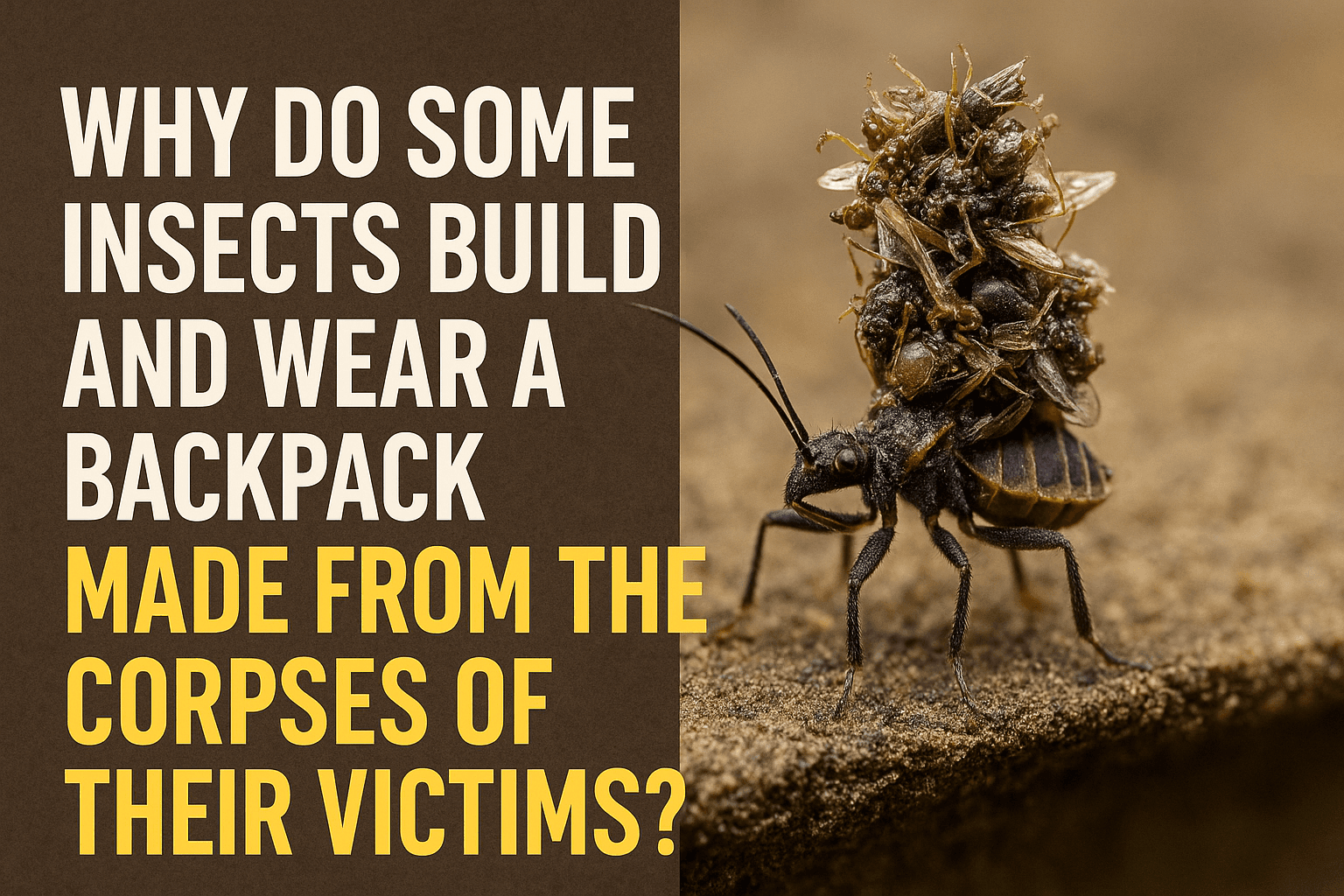Why do some insects build and wear a backpack made from the corpses of their victims
For some of nature's tiniest predators, the best defense is a grisly offense—building a protective shield from the corpses of their vanquished prey.


Too Long; Didn't Read
Certain insect larvae wear the corpses of their victims as a grisly form of camouflage. This backpack of bodies serves as a physical shield against predators and masks their scent, helping them ambush more prey.
Nature's Macabre Architects: Why Do Some Insects Build and Wear a Backpack Made From the Corpses of Their Victims?
In the vast and often brutal world of insects, survival is a game of eat or be eaten. While some creatures rely on speed, venom, or brute force, a select few have developed a strategy that is as ingenious as it is gruesome. Imagine a tiny hunter, not content with merely consuming its prey, but meticulously constructing a shield on its back from their hollowed-out remains. This isn't science fiction; it's a real-life survival tactic. This post will delve into the fascinating and functional reasons behind this macabre behavior, exploring why some insects build and wear a backpack made from the corpses of their victims.
Who Are These Corpse-Carrying Critters?
This bizarre behavior is not widespread, but it is masterfully employed by the young of a few specific insect groups. The two most famous architects of these corpse-backpacks are lacewing larvae and certain species of assassin bug nymphs.
- Lacewing Larvae (Order Neuroptera): Often called "junk bugs" or "trash bugs," these voracious predators are the bane of aphids and other small, soft-bodied insects. Using their pincer-like jaws, they pierce their prey and suck out the liquid insides. Afterward, they use long, hooked bristles on their backs to hoist the empty husks overhead, adding them to a growing pile of debris and carcasses.
- Assassin Bug Nymphs (Family Reduviidae): As their name suggests, these insects are deadly hunters. The nymphs of species like the masked hunter use a sharp proboscis to inject their victims with a paralyzing, flesh-liquefying saliva. Once the meal is finished, the empty exoskeleton is attached to the nymph’s back with sticky secretions, forming a ghastly covering.
A Ghastly Shield: The Ultimate Form of Defense
While it may seem like a morbid decoration, this corpse armor serves several critical, life-saving functions. Scientists have observed that this behavior is a sophisticated evolutionary adaptation that provides a multi-layered defense against predators.
Physical Camouflage
The most straightforward benefit is visual camouflage. A pile of dried-out husks, lichens, and dirt breaks up the insect's body outline, making it incredibly difficult for visual predators like birds, lizards, and jumping spiders to spot. The larva or nymph effectively disappears into the background clutter of the forest floor or the underside of a leaf, transforming from an obvious meal into what looks like a random bit of detritus.
A Physical Barrier
Should a predator see through the camouflage, the backpack serves as a literal shield. Research has shown that when attacked, the predator’s first strike often hits the non-essential pile of junk rather than the soft, vulnerable body underneath. This split-second misdirection can provide the insect with a crucial opportunity to escape. In studies comparing "naked" larvae to their backpack-wearing counterparts, the armored individuals demonstrated a significantly higher survival rate when faced with predators like ladybugs and spiders.
Chemical Camouflage
Perhaps the most brilliant aspect of this strategy is chemical warfare, or olfactory cloaking. Many predators, especially other insects like ants, rely heavily on their sense of smell to identify prey and intruders. By covering itself in the corpses of its victims (for instance, ants), an assassin bug nymph can mask its own scent and adopt the chemical profile of its prey. This allows it to move undetected among its future victims, getting remarkably close without triggering alarm pheromones or an aggressive colony response. It's the ultimate disguise, allowing the hunter to literally wear the scent of its enemy.
Conclusion
The act of wearing the dead is, without a doubt, one of the more unsettling behaviors in the insect kingdom. However, it is far from a random act of gruesomeness. This strategy is a masterclass in evolutionary efficiency, combining physical and chemical camouflage with a literal shield for protection. It allows these tiny, vulnerable insects to avoid detection, misdirect attacks, and infiltrate enemy territory. So, the next time you see a tiny, shambling pile of "trash" moving on a leaf, look a little closer. You may be witnessing one of nature's most creative and macabre survival artists, proving that in the battle for life, the best defense is sometimes a good offense's remains.


